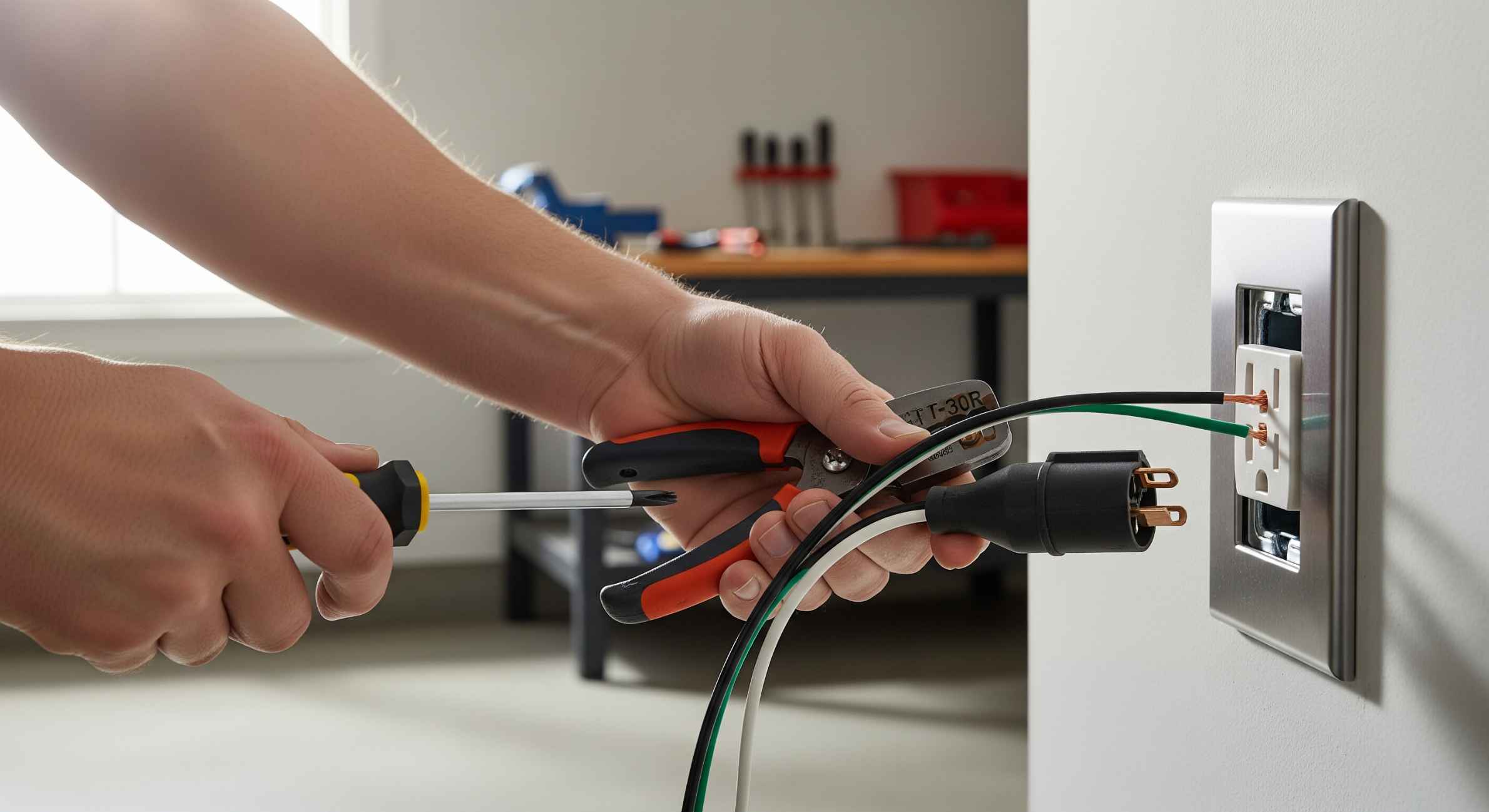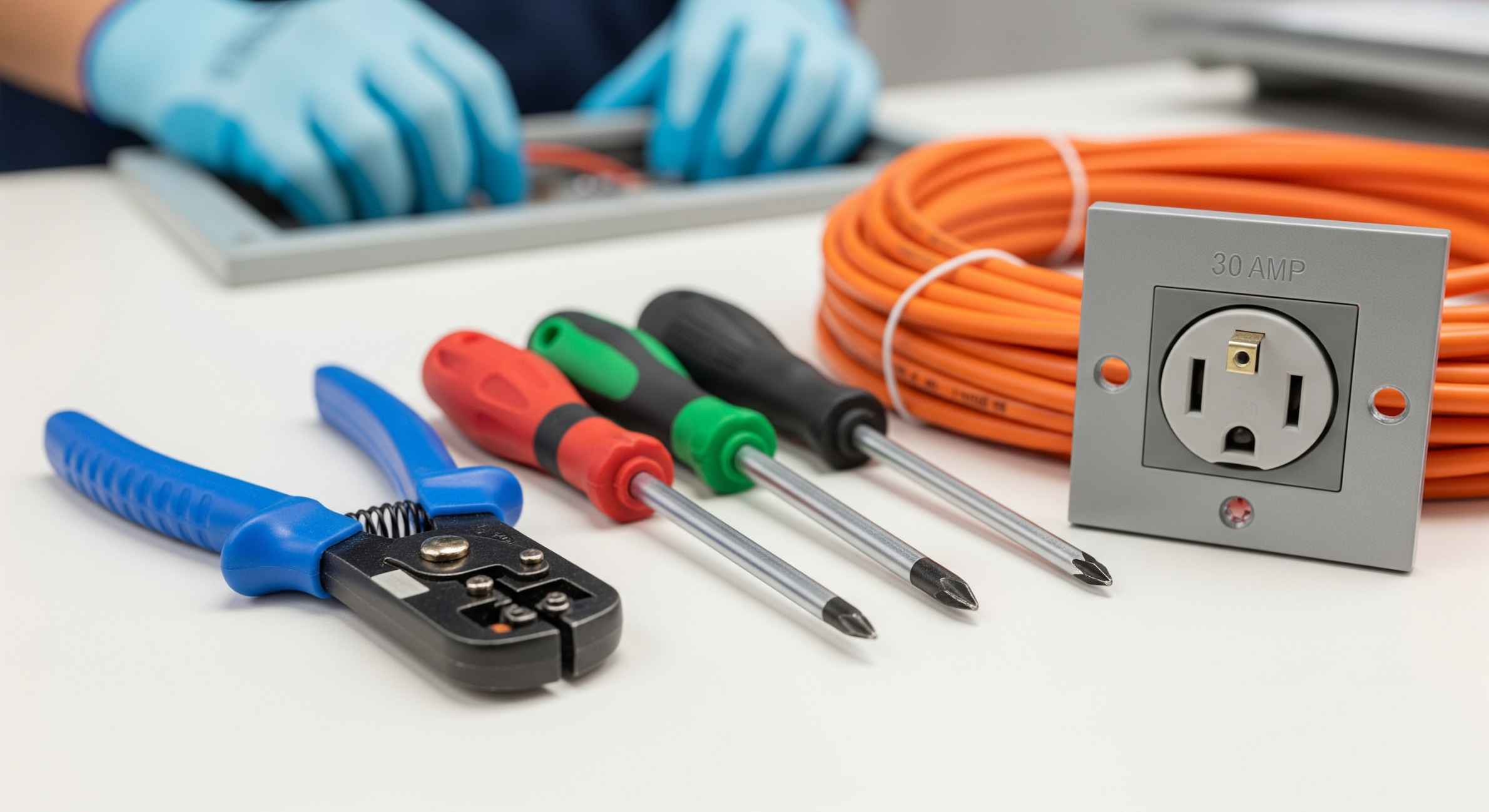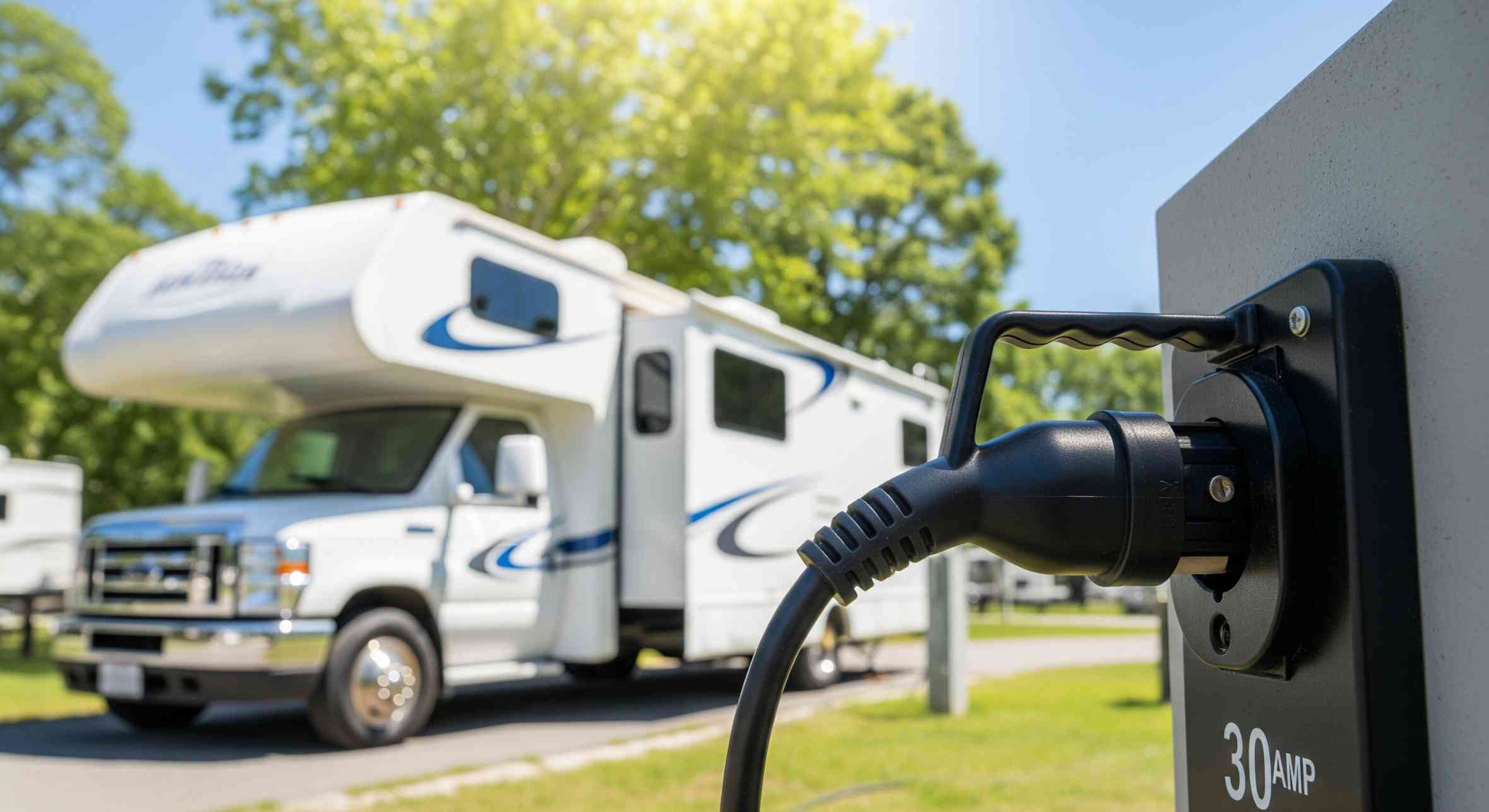When I first started living on the road, I had no idea how important the 30 amp RV plug would become. I was used to messing around with diesel engines, but wiring? That was a whole new ballgame.
After converting my Class C motorhome into a solar-powered off-grid haven, I quickly learned that the electrical system is the heart of my rig.
Over 15 years of full-time RV living, I’ve seen the good, the bad, and the shocking (pun intended!) when it comes to RV electrical setups.
So, if you’re about to wire your own 30 amp RV plug or just want to understand how it works, stick around. I’m here to break it down in the simplest, most practical way.
What is a 30 Amp RV Plug and Why Should You Care?
If you’re new to RV life or you’ve recently upgraded to a bigger RV, understanding how to use a 30 amp RV plug is crucial.
A 30 amp RV plug is what powers most smaller to medium-sized RVs. It’s a three-pronged plug that runs off a 120-volt system and can handle up to 3,600 watts of power.
This is perfect for RVs that don’t need the huge power demands of a 50-amp setup, which is often reserved for larger rigs with multiple high-power appliances.
For me, the 30-amp system has always been perfect. I run my lights, fridge, a few small appliances, and sometimes even my A/C without pushing my rig past its limits. But, here’s the thing: getting the wiring right is essential to avoid any mishaps.
How Does a 30 Amp RV Plug Work?

A 30 amp RV plug has a very specific design: it’s a three-prong system that connects to a 120-volt AC system. Here’s a quick breakdown of how the power flows:
- Black Wire (Hot): Carries the current from the power source into the RV.
- White Wire (Neutral): Completes the circuit, sending the current back to the source.
- Green Wire (Ground): Keeps everything safe by providing a path to the ground if something goes wrong.
This plug isn’t just for looks—it’s built to carry 3,600 watts of power (30 amps x 120 volts). That’s enough for your basic needs but won’t keep up with high-demand setups, which is why you’ll often find it on smaller RVs.
So, How Do You Wire a 30 Amp RV Outlet?
Wiring a 30 amp RV plug at home doesn’t have to be a nightmare. Here’s a basic guide to help you get it right.
But remember, safety first—always turn off the power at the main breaker before doing any electrical work. Now, let’s talk materials.
Materials You’ll Need:
- A NEMA TT-30R 30-amp outlet receptacle
- 10-gauge wire (or 8-gauge for added security)
- A weather-resistant enclosure
- Wiring tools (screwdrivers, wire strippers, etc.)
The Wiring Process:
1. Choose a Breaker Slot: Find an available slot in your breaker panel for a single 30-amp breaker. If there’s no space, you may need an extension panel.
2. Connect the Wires: You’ll be connecting three wires:
-
- Black (Hot): Attach to the brass screw on the outlet and the 30-amp breaker.
- White (Neutral): Attach to the silver screw on the outlet and the neutral bus bar in the panel.
- Green (Ground): Attach to the green screw on the outlet and the green bus bar in the panel.
3. Secure Connections: Tighten all the connections and make sure they’re secure, especially where the wires meet the outlet and the breaker.
4. Activate Power: After double-checking your work, turn the main breaker back on and test everything.
Pro Tip: Always double-check your wiring connections before powering everything up. It’s easy to make a mistake, and that could lead to issues down the road.
What About Adapters? Are They a Good Idea?
Now, let’s talk adapters. If you’ve ever come across a 50 amp outlet and thought, “Well, I have a 30 amp plug, can I use an adapter?” the answer is yes, you can. But, here’s the catch: your RV will still be limited to 30 amps.
That means you’re still capped at 3,600 watts of power, even if you plug your 30 amp RV into a 50 amp outlet using a dogbone adapter.
Adapting the plug allows you to connect your rig to a power source, but it doesn’t increase your RV’s power capacity.
So, while it can be helpful in a pinch, don’t expect to run dual air conditioners or heavy appliances on a 30-amp RV plug, even with the adapter.
Can I Use a 30 Amp RV Plug in My Home?

Absolutely! In fact, many RV owners opt to install a 30 amp RV outlet at their home or campground for added convenience. Here’s how you can make sure everything works smoothly:
1. Install a dedicated outlet using the steps I outlined earlier.
2. Use a surge protector for extra safety.
3. Check voltage levels with a multimeter to ensure everything is up to code.
If you’re not sure about the installation process or how your home’s electrical system will handle it, consult an RV technician or a licensed electrician. Better safe than sorry.
FAQs About the 30 Amp RV Plug
1. Can I run high-power appliances on a 30 amp RV system?
You can, but you’ll need to be strategic. A 30 amp system can handle basic appliances like lights, a fridge, and a small air conditioner.
But if you try to run too many high-power appliances at once—like a second air conditioner, a microwave, or a space heater—you could trip your breaker. Always check your power demands and manage usage accordingly.
2. What happens if I overload a 30 amp RV plug?
Overloading your 30 amp RV plug can cause the circuit breaker to trip, preventing your system from running. If the breaker trips, it’s a safety feature to protect your RV’s electrical system from damage.
However, repeated overloading can also cause wear and tear on the electrical components, so it’s best to avoid pushing the limits.
3. Can I use a 30 amp RV plug with a 50 amp RV?
You can use an adapter to connect a 30 amp RV to a 50 amp service, but it’s important to note that the power will still be limited to 30 amps.
This means you won’t be able to run as many high-demand appliances as you could on a 50 amp system.
Wrapping It Up: Powering Up Your RV with Confidence
Now that you understand how a 30 amp RV plug works, you’re ready to wire it up and hit the road with confidence.
Whether you’re at home, on the road, or parked at a campground, this simple yet vital component will keep your RV powered and your electrical system running smoothly.
Remember, RV life is all about balance—managing your power wisely and knowing your limits will make all the difference. So, go ahead, wire that outlet, plug in your RV, and enjoy your travels safely and efficiently.
Miles Carter’s RV Tip of the Day: Always, always have a surge protector in place. You never know when a power spike could mess with your electrical system, and it’s a lot cheaper to protect it than replace it.
Safe travels and happy wiring, my fellow RV enthusiasts!














